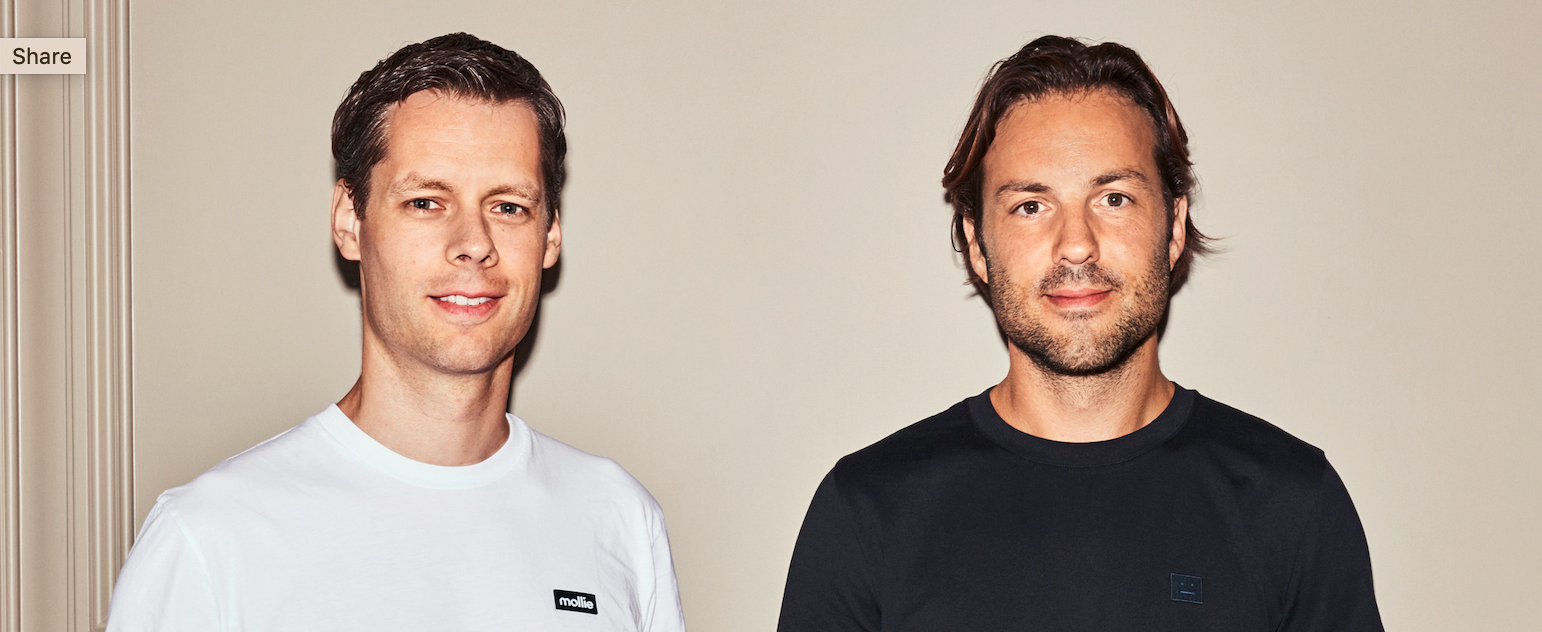“We haven’t won yet.”
That’s the company mantra at Stripe, the world’s most highly valued private fintech at $36bn.
It’s a motto that speaks to the hunger behind Stripe's goal of dominating the $78bn online payments space. The decade-old company is only continuing its upwards spiral, recently announcing a mammoth deal with Salesforce and a blossoming venture arm, all while processing hundreds of billions of dollars every year for companies from Amazon to Asos.
Europe, where Stripe first planted its flag in 2013, has long been central to the company's global ambitions. Today, Stripe is live in 29 European states and has been making the most of its first-mover advantage.
It seems to have worked — Europe is Stripe’s fastest-growing geography and the company has so far stuck it out in every market it's entered, making it a model for international expansion.
“Doing payments globally is hard, so pulling off that expansion is a big success,” says Louis Chatriot, founder of French ‘buy-now-pay-later’ startup and a former manager at Stripe.
Stripe, however, is wise to remind itself it’s not yet ‘won’ the race in Europe.
Stripe competes with established local players like Adyen and Checkout.com for enterprise clients, which could eventually squeeze into a price-war.
There is also a growing mass of smaller “European Stripes,” now working to bite into the US giant's top-line as well as its engineering lead. Among them are Mollie — which recently attained unicorn valuation to offer more localised solutions than Stripe, and Germany’s Heidelpay (acquired last year).
While it’s not a winner-takes-all market, Stripe faces a rather different landscape to the one it first encountered in Europe — so it will need to adapt and better-differentiate itself, says Northzone partner Jeppe Zink.
"Stripe had a very clear go-to-market, but it’s seeing the whole space reinvented. They have to use their muscle now to broaden out,” he told Sifted.
To help refocus the charge into Europe then, Stripe has hired former Oracle and Salesforce executive Eileen O’Mara, who joined last August.
Ireland-born O’Mara heads nearly 500 employees across Stripe’s European hubs, including engineering offices in Dublin and London.
She also shares the charge of aggressively expanding Stripe’s product range, including its direct-debit product to compete against local fintech GoCardless.
Stripe is in investment mode
We sat down with O’Mara as Stripe’s co-lead* in EMEA, to talk about the challenges facing the company, her team's strategic response to Covid-19, and taking on European fintechs.
The answers have been lightly edited and condensed.
You’ve been at Stripe just over a year. What do you think was missing when you joined?
I spent over 20 years in this market, so I know these companies all over Europe. I’ve just been a really big advocate and voice for European companies, old and new. That’s probably the single biggest thing, introducing a direct line there.
We’ve also done a lot of leadership hiring, with country leaders, and improving our systems to do business easier.
There’s so much complexity in Europe too, so it’s about proposing the right investments and right scale in place to serve our users.
I’m also absolutely data and metrics-driven, and I think that serves well.
Stripe has expanded into 29 European states. Do you know what the logic was behind that and why others don't do the same?
Our ambition was to allow businesses to transact across Europe. So it’s about recognising the opportunity to go bigger, faster. Stripe plays everywhere, it’s a really global mindset.
I don’t think European tech companies do that enough. When I speak to companies about their ambitions and their timeframes, my first thing is ok ‘what if we were going to knock two years off that.’ They don't have that urgency.
Maybe you can get into Spain or France before some local incumbents sweeps in.
Saying that, fintech is massively complex, by market, by country. So you have to have a good read on it before you go in.
Would you say the pandemic has changed the bulk of your client-base, overall?
Yes, we’ve noticed a real shift over the last year.
Stripe has grown up really successfully in Europe with digital-native companies, like Deliveroo, Nutmeg, Booking.com, Treatwell, and especially fintechs like Klarna. So historically, we’ve been known for powering Europe’s tech companies.
We’ve still serving those in a really material way, but there’s been a big shift in the last year, with more of Europe’s traditional/heritage brands turning to Stripe. These include BMW, LVMH AJ Bell, Waitrose, ITV...
A lot of high street (food/drink and retail) businesses also switched to Stripe to enable online payments, mostly as a response to COVID. In the UK, that includes Yo!Sushi, Zizzi’s, Holland and Barrett.
Stripe has also become hugely popular with European news media as a way to monetise beyond ads. We now serve The Economist, The Guardian, Axel Springer (Die Welt, Bild), Der Spiegel, and the like.
We’re also seeing traditional enterprise companies looking now to create different revenue streams online.
How big of a threat are Europe's new payment players to Stripe?
When it comes to competition, I look at it differently. When you think about the amount of commerce online, it’s still really small, so there’s a lot of room for everyone.
In the UK, it’s gone from 19% to 33% in a 4 week period. That’s only going to grow, so there’s plenty to go around.
Overall, Stripe is pretty well established in Europe. And of course we’re going to continue growing at pace.
You can often get boxed in one area, and that’s not really Stripe’s story. It’s an infrastructure play, it supports digital-native and enterprise companies to scale in their markets and to expand their revenue opportunity across borders.
What about serving smaller companies then? You obviously serve global, highly-scalable companies so do you have less focus on smaller, local clients?
Stripe onboarded 100,000 new SMB merchants just across Europe during the lockdown-period alone. So I like to think we serve everybody. A lot of these are digital-native but a lot of them are not, they’re offline firms going online. They look to Stripe, because we can do it on a trusted platform and really get them live within a few hours.
How do you see the rise of account-to-account payment portals (or ‘Open Banking’) in Europe? It's already huge in the Nordics and encroaching on traditional payment methods. Is that a threat to you and what are you doing in that field?
There’s probably two ways of looking at Open Banking as a threat. One is that somebody else comes along and offers some incredible merchant solution for adopting Open Banking. That same threat exists everywhere else, and the challenge for Stripe is to be the best offering merchants need.
The second threat is squeezing fees. But to be honest, not so much. If you look at our pricing, Stripe doesn’t take the lionshare of that; it goes to banks and cards. So the card networks could get usurped but we don’t stand to lose that much.
If we can provide easy-access enablement for merchants to use Open Banking, we can still charge a fee on top of that.
So we see Open Banking as an opportunity and, of course, we’re working on it.
But the best reason for us to get into Open Banking in a serious way is merchants coming to us and saying ‘The one thing I need next year is for you guys to do something with Open Banking, otherwise I’m going to go elsewhere.’ The honest truth is that hasn’t happened.
Do you see a European acquisition on the cards, and if so, what criteria would you use to pick a target?
We’ll consider an acquisition whenever we see a startup that’s developed a solution which can broaden or enhance the value we’re already delivering for our users. This was the case for Index a few years back, which eventually helped us build our point of sale product Terminal. [Stripe has made 8 acquisitions to date, the most recent of which was Ireland's Touchtech in 2019]
Whilst there’s no specific news to share right now, it is the case beyond just acquisitions, that Stripe is in investment mode - growing our teams, building new products and enhancing existing ones, and generally looking for ways we can provide even more value to the hundreds of thousands of Stripe users in Europe.
Does Stripe feel more European or American?
Stripe feels very Irish or British. Down to tiny things, like in every office you’ll find English and Irish tea in all the little draws!
Then there’s a ton of senior roles with people making material decisions in London or Dublin. You don’t often get that in a [US tech] company until it's much later in their journey.
At Stripe, you're also not allowed to celebrate anything without explaining what else you’ve still got to do. For instance, there's always a whole “we haven’t won yet” section in company-wide emails. There’s a European humility in that.
We also organise ourselves very intentionally in cross-functional teams to inform decisions. So mixing people in product, fraud, sales, etc. These pods are co-accountable, and I think that’s something we’ll keep in our DNA.
Based on my own perspective, it does feel quite different.
How do you view the European tech scene? Can it compete with the US?
The quality and calibre of entrepreneurs and startups we have in Europe is as good if not better than the US.
I think a lot of the dynamics and the way we scale out of Europe is due to funding and the availability of funding, to be quite frank. But we‘re seeing a changing of the tide there, that’s a massive unlocker.
On top of that, with Covid, it really doesn't matter where you are now.
I think we’ll see Europe lead the way, maybe at greater scale. There’s no lack of ambition or talent here.
* Note: O'Mara leads Stripe's European business alongside Matt Henderson, who heads the product strategy.


